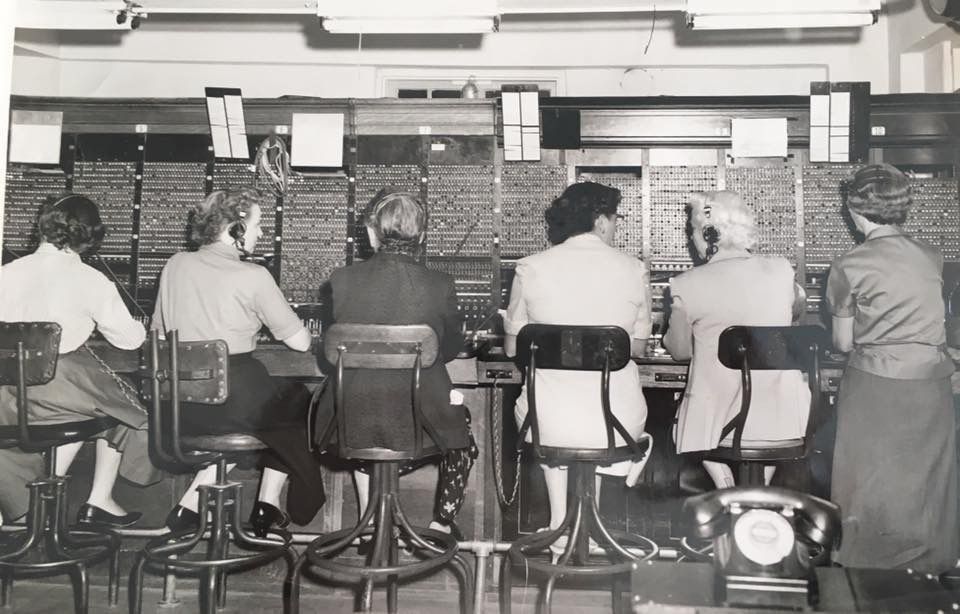SAN MARCOS, Texas -- A historic building near downtown San Marcos has been demolished to make way for a residential and retail building.
- Historic "blue building" in San Marcos demolished
- Site will feature a residential and retail building
- Historic building housed San Marcos Telephone Company
That iconic blue building on West San Antonio Street was constructed in 1928 and housed the old San Marcos Telephone Company. It was added to the National Register of Historic Places in 1983 due to its Spanish-Colonial Revival architecture and significance to the San Marcos community. The company stayed in that location until 1955.
For seventh-generation San Marcos resident Michele Frazier, it was more than just "that blue building."
"My grandmother was one of the first telephone operators in San Marcos, so she worked here," Frazier said. "During that time, that's kind of all the things that were available around here as far as work went. Besides the university, the phone company was one of the first places that folks could go get a job. Because they needed linemen, they needed people that work the frame."
Frazier said working for the San Marcos Telephone Company was a family affair.
"There was a big group of ladies that worked there. My grandmother was there, my mother was there. Over a span of 50 years there was always three of us that worked for the phone company at consecutive time," Frazer said. "Upstairs was all the switchboard area. In the upper right hand side window, that was a big long switchboard."
She recalls some of her favorite memories are running up and down the stairs as a little girl, and operating the switchboard, even though she said she didn't know what she was doing at that age.
"But I could get people on the phone!" Frazier said.
Although she likes to remember the positive times, Frazier said she's upset to see the building being torn down.
"San Marcos is losing a lot of history, not just us and the people that were involved," Frazier said. "Once you get rid of your history, you've just kind of lost everything, it's like it's your soul."
Frazier says there's nothing wrong with development, but wishes the plans had been tweaked to involve saving the building.
"When you take down these old buildings, you can't get them back. I mean that's the bottom line. There's a lot of history. And it's sad that it's going down," Frazier said. "What's going to be next? There are a lot of spots in San Marcos that need to be saved."
Being listed in the National Registry doesn't place restrictions on future development. Since the building was private property, the owner was free to sell it.
Griffin Spell, chair of the San Marcos Historic Preservation Commission, issued a statement regarding the demolition and future of other historic properties:
"Friends,
"I have heard from many of you over the past several days about the demolition of the San Marcos Telephone Company building at 138 West San Antonio. I understand your frustration and disappointment about the policy and procedural failures that lead to the destruction of one of our historical and cultural treasures. The Historic Preservation Commission, as a city-appointed board, must serve to promote the public good and must be accountable and responsive to the citizens of San Marcos.
"I directed city staff to plan for a special meeting of the Historic Preservation Commission before the end of June to take public testimony and comments, discuss these issues in open session, and provide direction to city staff and, if necessary, recommendations to our City Council so that something like this does not happen again."
Adding a demolition review period for these historic sites was a recommendation that came out of the My Historic SMTX survey conducted last year. In order for a future site to be protected, it must be within a local historic district or have a local historic landmark designation. That designation would need to be approved by the Historic Preservation Commission. The HPC only reviews demolition of locally designated historic landmarks and properties located in historic districts.
For this particular project, the city says the site where the blue building and Ozona Bank was demolished will be the home to one of two San Marcos Lofts, which will be multi-family apartments, not purpose-built student housing. Between Lofts 1 and 2, there will be 277 units with 385 bedrooms and 10,000-plus square feet of retail and office space. Lofts 2 will be located across the street from Lofts 1, where Gold Crown Billiards used to be. Both are expected to be completed by 2020.
Currently, site permits are issued for both projects, with building permits still in the permitting process. Before construction can begin, those building permits need to be issued and a pre-construction meeting must take place.




